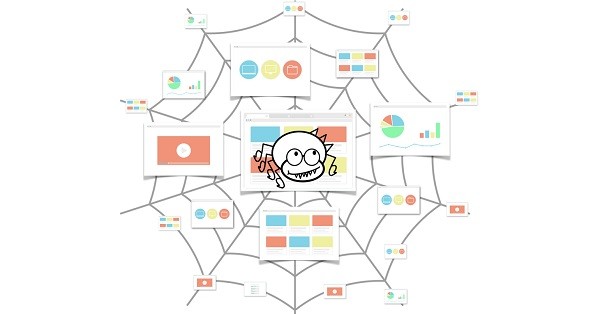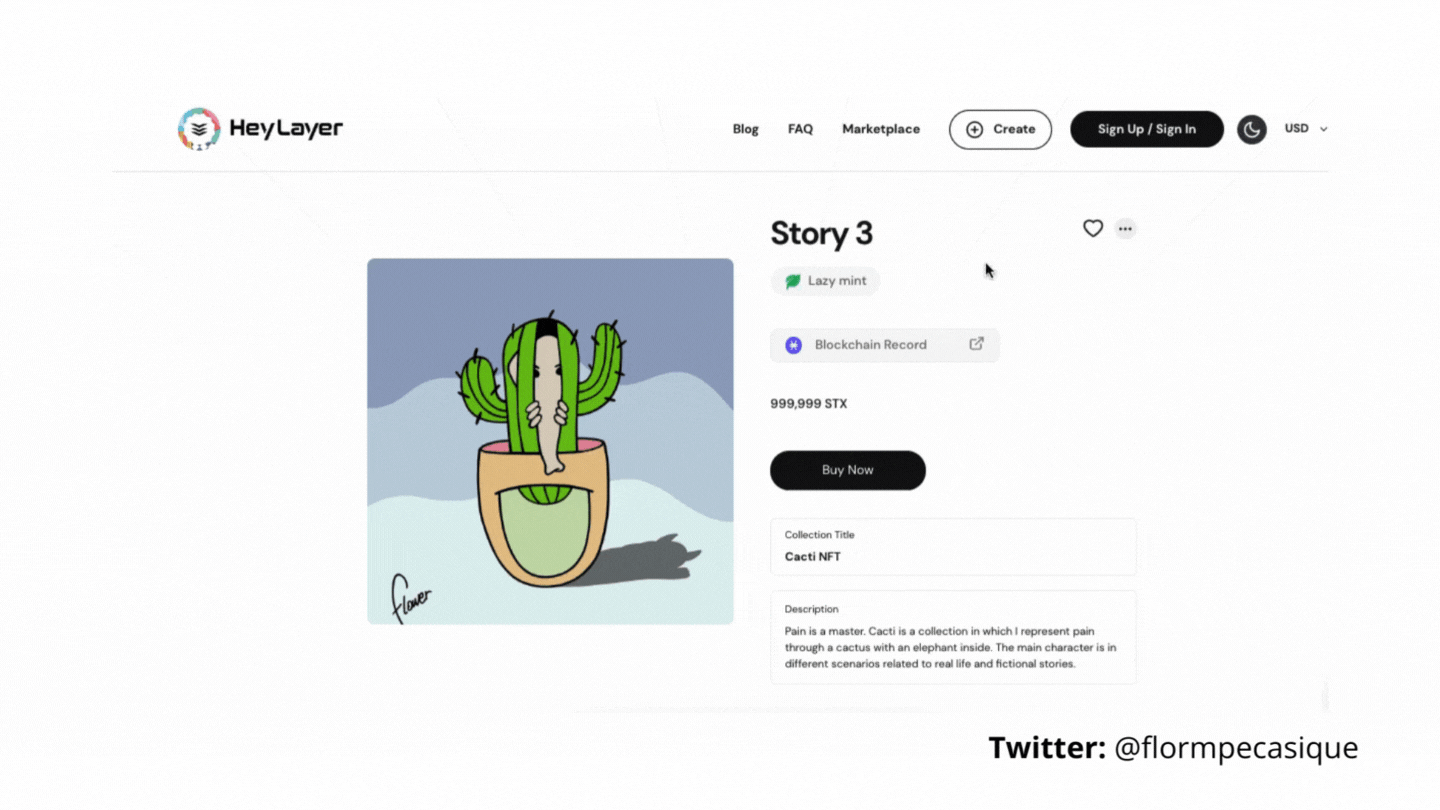
Oct 02•7 min read
How does an artwork get registered on the Blockchain? - by Flor Peña

[Lee el artículo original en Español aquí]
Hello, I'm Flower, and this is a new article where I want to share details with you when registering a work on the blockchain and other basic conditions to consider as artists and content creators.
I decided to write about this topic after reading this article by Smartists founder Georgina Mauriño, in which they mention registering a work online, to make it more practical and to show you what it really means
What does it mean to register a work on Blockchain?
When we mint an NFT in Bitcoin thanks to Stacks technology, two things happen: it is registered in a Stacks block and in a Bitcoin block at the same time, this is due to the PoX consensus mechanism. The important thing now is that you keep in mind that the record of your work remains in both blockchains and therefore you can verify the smart contract yourself.
What is a smart contract?
The wonderful thing about an NFT is that it is framed in a smart contract, which has the power to execute and enforce itself autonomously and automatically. Pre-minting conditions prevail. It is a kind of agreement between two or more parties through a series of programmed parameters. It's amazing! Let's not only imagine this in digitized works, but also that there can be smart contracts for practically everything!
You can convert any content to NFT: static image, gif, videos, music, even physical art. A file whose authenticity can be verified through the blockchain that supports it. They can make copies of an NFT but if you want to know what the original version is, just go to the blockchain and you will have all the information.
What details can I check in the smart contract?
ALL. You can see the minting date, addresses linked in the contract, conditions, and history of events over time. Imagine it as a tree with branches and roots, which will be as wide as your content is distributed.
The NFTs come to be certificates of authenticity of our works, the digital proof of our ownership.
By knowing the date of issue, you can identify when your work was released and in case they make copies, this aspect will help you to defend your copyright, since all these copies will surely be made after the date of origin.
In relation to the linked addresses, it will help you to know which are the addresses of the original author, as well as information on sales royalties and additional commissions from the marketplace that you have used to spread your work.
The conditions when you sign the smart contract offer us details of how it was done and what will happen to the work in case of sale or other actions that are executed automatically according to the prior agreement of two or more parties.
The events' history is a great thing, it will help you know what happened after the mint of your NFT. Everything will be seen with dates and addresses linked in each process, which can be verified in the transactions and therefore in the blockchain.
✅ VÍDEO (in Spanish) [ How to see a smart contract for an NFT on Bitcoin ] Cómo ver el contrato inteligente de un NFT en Bitcoin en Gamma.io y Heylayer.com aquí.
When I did SEO for internet content, I always saw the term “Google's spider” (also called crawler): it refers to the crawling robot that is responsible for analyzing the content of websites on the internet. The more valuable connections a content had, the more Google prioritized it to show in its search engine, favoring its positioning.

Hence, almost unconsciously today I make connections of all my contents with each other, because in this way I expand my network, the same network that you want to do with web3, in Blockchain and not through centralized servers like Google's, which we depend on algorithms that in many cases we don't even know what they mean or what they do, putting us at the mercy of super intermediaries.
Web3 is in its infancy, but what an illusion it makes me to be able to imagine an internet where everything is registered in the blockchain. I know we are going to build it together and it will take a little time, but it will happen.
Here is the blockchain record of my Round Face NFT Collection, minted through gamma.io:

Here is the blockchain record of my NFT: Story 3, minted via heylayer.com:

Basic INFO to consider:
Contract name - Contract: It refers to the smart contract that frames my NFT. In Heylayer if we click there, we see the details.
Transaction ID: It is the unique identifier of this NFT transaction.
Deployed by or Called by: It is the one who calls the contract, which in the first gif is the address that I applied for it in gamma.io and in the second gif it is Heylayer (the marketplace is the one who executes the contract and pays the fees) and this is the main address they use for this purpose.
Fees: These are the transaction fees when minting. They are made in STX cryptocurrency and are very low compared to Ethereum.
Nonce: In cryptography, a nonce is an arbitrary number that can be used only once in a cryptographic communication. It is often a random or pseudo-random number issued in the authentication protocol to ensure that old communications cannot be reused in playback attacks.
Block height: It defines the exact minting date of the NFT and its position in the chain of a confirmed block in both Stacks and Bitcoin.
Block hash: This data has as its main objective to encode information to form a unique string of characters. This function serves to ensure data authenticity, secure storage and signing of this smart contract.
I must point out that Heylayer is a marketplace that mints right after the NFT purchase, not before, so it displays the collection for viewing but is not on the blockchain until each item is sold. You may be wondering: so how can I prove the authorship of the NFTs if they are not yet on the blockchain? For the History (history), an aspect that is below the description of NFT.
In the image below, you see that this NFT was uploaded on May 31 at 2:16am through my account verified by the marketplace:
%2017.10.02.png)
Mas adelante, explicaré más detalles técnicos de los contratos inteligentes.
Later, I will explain more technical details of smart contracts.
As you have seen, the fact that a content is registered in the blockchain allows us to see EVERYTHING from its birth, information that no one can modify or invent, because it is not possible to overwrite past blocks, this gives us enormous power as content creators.
I remember someone who plagiarized one of my best articles on Florpeña.es/blog and for this man it was so simple to change the publication date to two months before my publication. My version was the original, you bastard! Well, this cannot be done in the Blockchain, we cannot launch content and then publish the same but on earlier dates because they would be past blocks.
Well, that's all for today, follow my blog Sigle, follow me on Twitter as @flormpecasique and connect your Hiro wallet to Smartists, because I'm going to be providing a lot of useful content for the entire community in Spanish. I hope you have a great day!
Flower.
